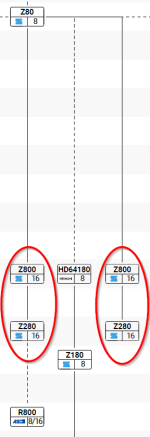I'm creating a CPU family tree poster and could do with some help adding additional families and verifying data.
PDF file attached.
The idea is to have all the CPUs used in various computers and game consoles. I only go up to 1996 but I could add some more years if there is interest, or maybe just to make it fit a A size sheet of paper.
I don't include slight variations, or second source parts where they are identical to the original. I also don't include microcontroller models unless they were used in a computer.
I'm missing year information for NEC V41 and QED R4700. I'm going to add the Signetix 8X300, because it was used in some popular hard disks. I was thinking of adding some examples of popular machines that used each CPU, but space is an issue. I already need to reformat it to bunch things up a bit.
I know some of the 8/16 and 16/32 bit labels are controversial. I based them on my own judgement, but feel free to make your case!
Any help would be appreciated. After this I was thinking of doing a timeline of computers. Both will end up on my wall.
PDF file attached.
The idea is to have all the CPUs used in various computers and game consoles. I only go up to 1996 but I could add some more years if there is interest, or maybe just to make it fit a A size sheet of paper.
I don't include slight variations, or second source parts where they are identical to the original. I also don't include microcontroller models unless they were used in a computer.
I'm missing year information for NEC V41 and QED R4700. I'm going to add the Signetix 8X300, because it was used in some popular hard disks. I was thinking of adding some examples of popular machines that used each CPU, but space is an issue. I already need to reformat it to bunch things up a bit.
I know some of the 8/16 and 16/32 bit labels are controversial. I based them on my own judgement, but feel free to make your case!
Any help would be appreciated. After this I was thinking of doing a timeline of computers. Both will end up on my wall.


